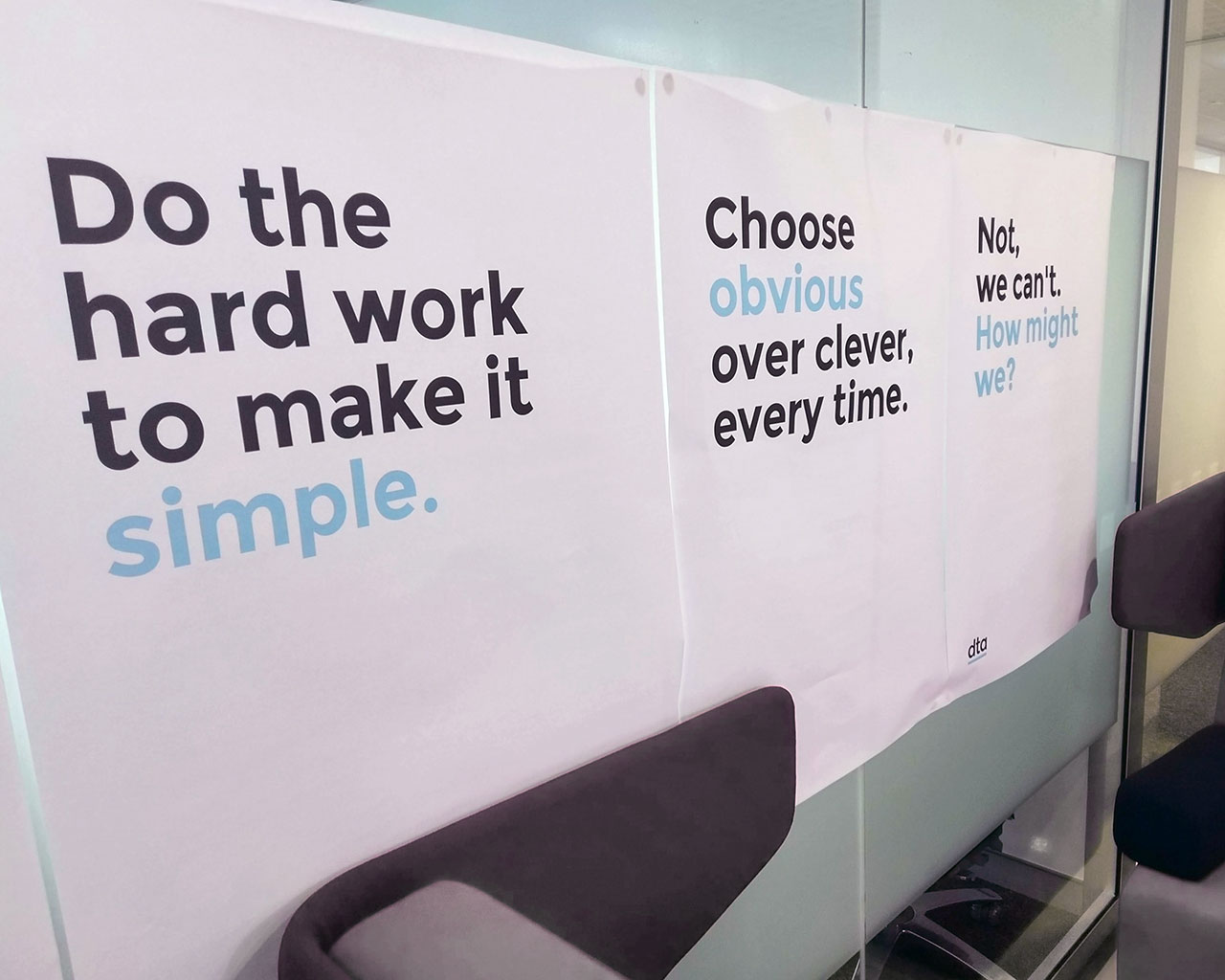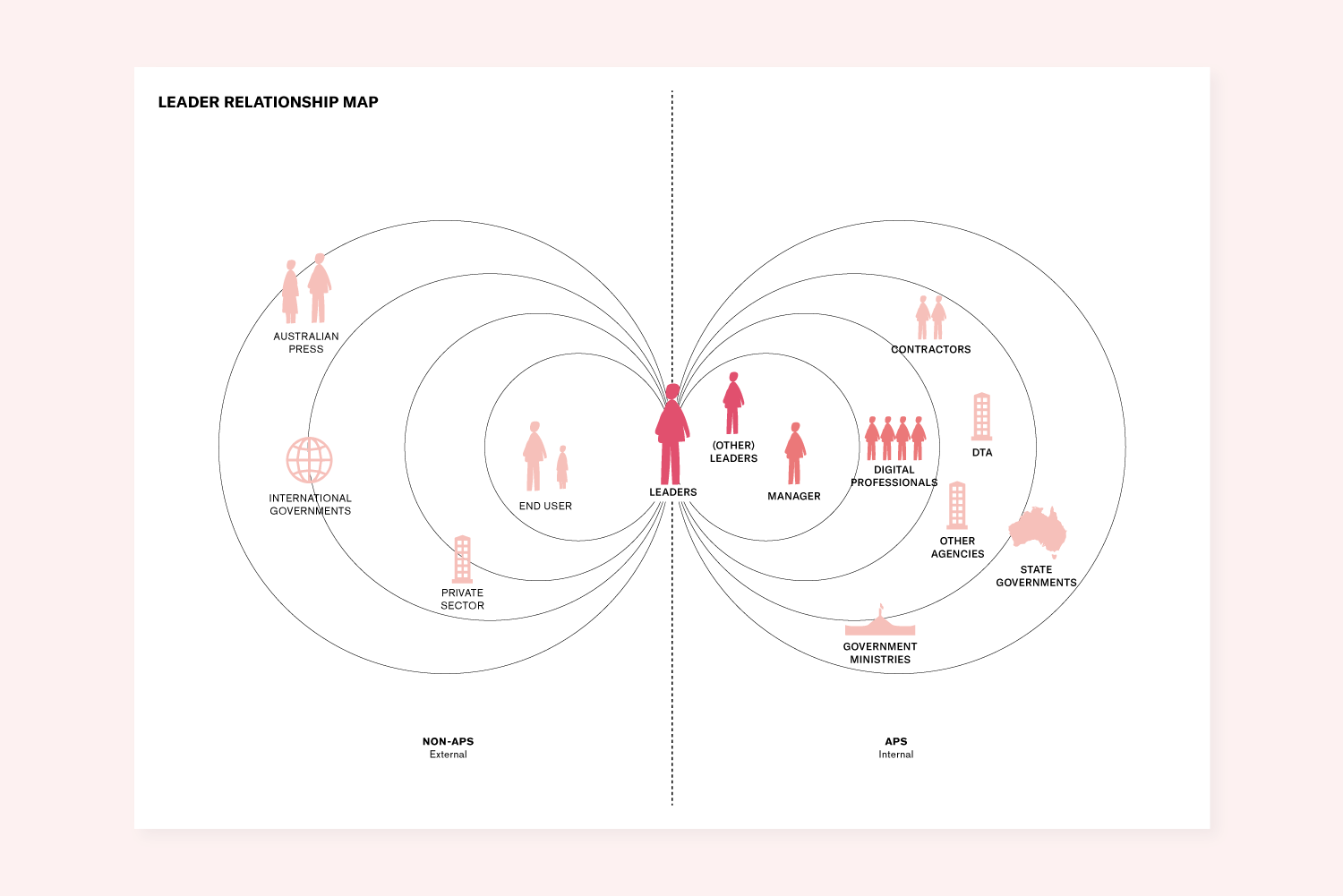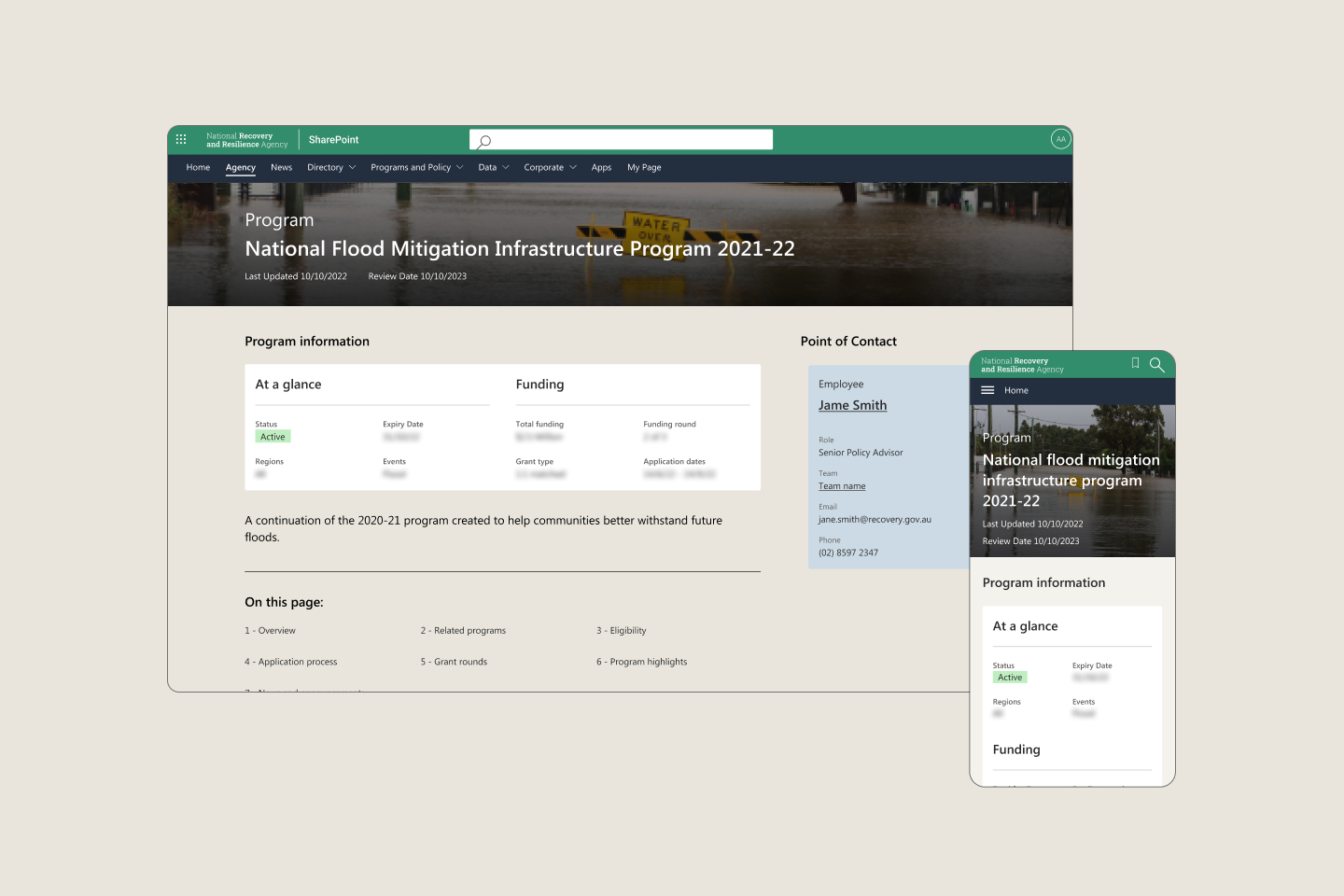Digital Transformation Agency
Understanding digital capability in the Australian government
Paper Giant worked with the Digital Transformation Agency (DTA) to identify and unpack the critical factors that enable or inhibit digital capability uplift within the Australian Public Service (APS).

Outcomes
-
Informed and influenced the Australian Government’s agenda of transforming its services to make them easier, cheaper and faster to use
-
Outlined strategies for building capabilities and developing the skills necessary for designing, delivering and leading digital projects within the APS
-
Informed the development of the Building Digital Capability (BDC) Program delivered by the DTA and the Australian Public Service Commission (APSC) including digital talent attraction and retention strategies and the design of a senior executive digital leadership program
Services
- Research and insights
- Strategic design
- Employee experience
Sectors
Photos from the research phase that was designed to uncover the relationships and processes found within the DTA
Photos from the research phase that was designed to uncover the relationships and processes found within the DTA
The challenge
Digital technology is driving rapid change and creating significant impacts for consumers, workers, businesses and the broader economy, improving efficiency for businesses and government agencies, and providing new opportunities for innovation.
Businesses are increasingly being pressured to make ‘digital transformation’ a core component of overall businesses strategy. Due to lack of resources, lack of talent, and the pull of other priorities, digital transformation seldom meets expectation.
This can leave leaders wondering how their organisation can transcend these constraints and utilise digital skills to transform their processes, workforce skills and infrastructure to accommodate the needs of an increasingly demanding customer base.

A relationship map that highlighted how closely connected leaders were to different people and organisations inside and outside of the APS
Understanding large complex organisations
The APS is a complex working system comprised of hundreds of agencies and departments, each with their own unique strategy, procedures, legacy, people, culture and infrastructure.
We explored the factors that contribute to an agency’s overall ability to embrace a new way of working, and the interlinking dependencies between each factor, in order to understand digital transformation across the Australian Public Service.
Our research focused on fourteen APS agencies and departments in Canberra, Sydney and Melbourne. We spoke to 66 employees, with varying professional backgrounds and experience. We discovered how capability was connected to the roles, responsibilities and relationship between leaders, manager and staff. In the process we identified key tactical areas that needed to be targeted.



